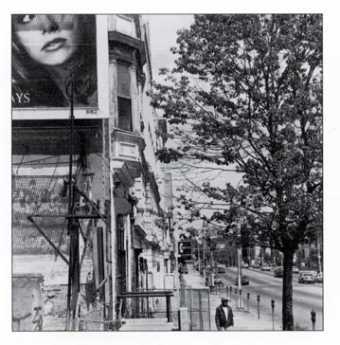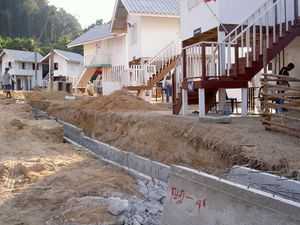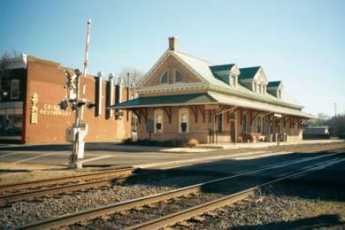Related Topics
Historical Preservation
The 20% federal tax credit for historic preservation is said to have been the special pet of Senator Lugar of Indiana. Much of the recent transformation of Philadelphia's downtown is attributed to this incentive.
Indigents
With a long history of welcoming and assisting the poor, Philadelphia has always risked swamping the lifeboat by attracting more of them than it can handle.
Montgomery and Bucks Counties
The Philadelphia metropolitan region has five Pennsylvania counties, four New Jersey counties, one northern county in the state of Delaware. Here are the four Pennsylvania suburban ones.
Slum Creation and Urban Sprawl

|
| North Philly |
Slum creation, while occasionally deliberate, is most typically caused by an area's abandonment by previous owners, at lower prices, to bargain hunters. When a large employer moves or closes, the employees seek work elsewhere and sell their houses for what they can get. When the influx of new ethnic groups threatens to weaken real estate prices, panic may be created that waiting too long to sell may find the property worthless; nobody wants to be the last one out the door. During the 20th Century, the driving force in Philadelphia was the flight to the suburbs by people who found a better value in suburban schools, shops, and neighborhoods. All of these processes create slums, almost invariably with a net loss of value in the community. Take a look at those deteriorating mansions on North Broad Street, where the Civil War millionaires used to live. In today's terms, they were once worth several million dollars apiece, but in today's real estate market, they are next to worthless. Value disappeared. The community as a whole is poorer than it was. From the Mayor's point of view, the area has lost its tax base.

|
| New Construction |
Of all these forces, the flight to the suburbs is probably the least destructive to the region, particularly if it is reasonably slow. Out in the suburbs, value is being created as cornfields turn into suburbia, and that added value must be set against the reduced value of the abandoned slum areas. Viewed from the Mayors' perspectives, however, we have a zero sum. The city loses its tax base, the suburbs gain, and local politics soon degenerate into warfare between the suburbs and the city. Not a nice situation, and it cries out for a new civic design. The city politicians have dreamed for a century of city-suburb consolidation, but Philadelphia tried that in 1850. It didn't cure the problem, and it may have created new problems. In any event, suburban politicians live and die on their anti-city rhetoric, and everybody's behavior in the Legislature deserves no kinder description than -- savage.

|
| Orange Station |
Because this issue has been the underlying theme of the Pennsylvania Legislature for two centuries, it repeatedly surfaces in ways that are surprising unless you understand the mechanics of suburban sprawl well enough to see the connection. For example, nowadays a real issue is the three-car family.
During the 19th Century, multi-acre estates spread out along the Main Line of the Pennsylvania Railroad, with the coachman and horses taking plutocrats to the station. Smaller houses, for people who walked to the station, clustered nearby, but you didn't have to go very far from the station to find the gated estates. Suburban development spread out in linear and predictable fashion from the city, along the Main Line. The advent of the automobile freed commuters from the tyranny of railroad station orientation, and middle-class residents could flee the city to areas of the suburbs that were fairly far from the railroad and its stations. But not too far, because there was the problem of the lady of the house, who had to get to the stores. To free her up, the family had to have two cars in the garage. Suburban shopping malls helped her problem, somewhat, but the railroad station was still a magnet.
And then, the majority of married women became working wives, confronting the problem of kids getting to the confounded school. The highly questionable solution of giving the kids a collective car as soon as the oldest got a license, made the oldest kid proudly take the role the coachman used to have, and it caused a lot of teenage turmoil that need not be described here. The point to be stressed is that the three-car family sent home-building into cornfields that were not even close to the main road. Since land gets cheaper the further you get from the city, an economic incentive is created to enter uncongenial social environments, and adopt unexamined attitudes about the environment that are ultimately flatly contradictory.
When the kids leave home, the exurban pioneers no longer need the third car, and think about returning to city life. So far, however, they have been returning to Center City, not the residential neighborhoods they used to call home.
Originally published: Friday, June 23, 2006; most-recently modified: Wednesday, June 05, 2019
| Posted by: Mike Curtis | Apr 20, 2010 12:48 PM |